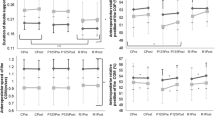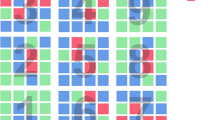Abstract
Stable, personality-based (trait), and fluctuating, situational (state) anxiety have both been shown to consume attentional resources and reduce functional cognitive capacity, which may play a role in gait control. However, the role of attention in the relationship between trait and state anxiety has not yet been investigated formally. This study used a virtual reality–threat environment to evaluate whether changes in attention mediate the effects of state and trait anxiety on gait. Thirty adults aged 19–28 completed five walking trials in four conditions: (i) low threat—walking across a virtual plank (0.5 m wide) on flat ground; (ii) low threat + dual task (auditory digit monitoring); (iii) high threat—walking across a virtual plank elevated above a deep pit; and (iv) high threat + dual task. Trait anxiety levels were determined by the State-Trait Anxiety Inventory, while state anxiety was captured using self-assessment manikins. Higher trait anxiety predicted slower gait velocity and longer time in double support in the high-threat condition compared to low-threat condition (i vs iii), but not when dual tasking, compared to single-task walking, in the absence of threat (ii vs i). Additionally, higher trait anxiety predicted increased step length variability in the high compared to low-threat dual-task condition. Overall, trait anxiety predicts a slower, more cautious gait pattern during threatening conditions while dual tasking during the threat.



Similar content being viewed by others
Data availability
The data that support the findings of this study are not openly available due to reasons of sensitivity and are available from the corresponding author upon reasonable request. Data are located in controlled access data storage at The University of Waterloo.
References
Adkin AL, Carpenter MG (2018) New insights on emotional contributions to human postural control. Front Neurol 9:1–8. https://doi.org/10.3389/fneur.2018.00789
Adkin AL, Frank JS, Carpenter MG, Peysar GW (2000) Postural control is scaled to level of postural threat. Gait Posture 12:87–93. https://doi.org/10.1016/S0966-6362(00)00057-6
Adkin AL, Frank JS, Carpenter MG, Peysar GW (2002) Fear of falling modifies anticipatory postural control. Exp Brain Res 143:160–170. https://doi.org/10.1007/s00221-001-0974-8
Azevedo C, Espiau B, Amblard B, Assaiante C (2007) Bipedal locomotion: toward unified concepts in robotics and neuroscience. Biol Cybern 96:209–228. https://doi.org/10.1007/s00422-006-0118-0
Bishop SJ (2009) Trait anxiety and impoverished prefrontal control of attention. Nat Neurosci 12:92–98. https://doi.org/10.1038/nn.2242
Brown LA, Frank JS (1997) Postural compensations to the potential consequences of instability: kinematics. Gait Posture 6:89–97. https://doi.org/10.1016/S0966-6362(96)01106-X
Bradley MM, Lang PJ (1994) Measuring emotion: the self-assessment manikin and the semantic differential. J Behav Therapy Exper Psych 25(1):49–59. https://doi.org/10.1016/0005-7916(94)90063-9
Brown LA, Gage WH, Polych MA et al (2002) Central set influences on gait: age-dependent effects of postural threat. Exp Brain Res 145:286–296. https://doi.org/10.1007/s00221-002-1082-0
Calvo MG, Eysenck MW (1992) Anxiety and performance: the processing efficiency theory. Cogn Emot 6:409–434. https://doi.org/10.1080/02699939208409696
Carpenter MG, Frank JS, Silcher CP (1999) Surface height effects on postural control: a hypothesis for a stiffness strategy for stance. J Vestib Res 9:277–286. https://doi.org/10.3233/VES-1999-9405
Cleworth TW, Horslen BC, Carpenter MG (2012) Influence of real and virtual heights on standing balance. Gait Posture 36:172–176. https://doi.org/10.1016/j.gaitpost.2012.02.010
Cleworth TW, Chua R, Inglis JT, Carpenter MG (2016) Influence of virtual height exposure on postural reactions to support surface translations. Gait Posture 47:96–102. https://doi.org/10.1016/j.gaitpost.2016.04.006
Ebersbach G, Dimitrijevic MR, Poewe W (1995) Influence of concurrent tasks on gait: a dual-task approach. Percept Mot Skills 81:107–113
Ehgoetz Martens KA, Ellard CG, Almeida QJ (2015a) Virtually-induced threat in Parkinson’s: Dopaminergic interactions between anxiety and sensory-perceptual processing while walking. Neuropsychologia 79:322–331. https://doi.org/10.1016/j.neuropsychologia.2015.05.015
Ehgoetz Martens KA, Ellard CG, Almeida QJ (2015b) Anxiety-provoked gait changes are selectively dopa-responsive in Parkinson’s disease. Eur J Neurosci 42:2028–2035. https://doi.org/10.1111/ejn.12928
Ehgoetz Martens KA, Silveira CRA, Intzandt BN, Almeida QJ (2018) Overload from anxiety: a non-motor cause for gait impairments in Parkinson’s disease. J Neuropsychiatry Clin Neurosci 30:77–80. https://doi.org/10.1176/appi.neuropsych.16110298
Ellmers TJ, Young WR (2018) Conscious motor control impairs attentional processing efficiency during precision stepping. Gait Posture 63:58–62. https://doi.org/10.1016/j.gaitpost.2018.04.033
Ellmers TJ, Cocks AJ, Young WR (2020) Evidence of a link between fall-related anxiety and high-risk patterns of visual search in older adults during adaptive locomotion. J Gerontol A Biol Sci Med Sci 75:961–967. https://doi.org/10.1093/gerona/glz176
Ellmers TJ, Cocks AJ, Doumas M, Williams AM, Young WR (2016) Gazing into thin air: the dual-task costs of movement planning and execution during adaptive gait. PLoS ONE 11:e0166063. https://doi.org/10.1371/journal.pone.0166063
Ellmers TJ, Wilson MR, Kal EC, Young WR (2023) The perceived control model of falling: developing a unified framework to understand and assess maladaptive fear of falling. Age Ageing 52:afad93. https://doi.org/10.1093/ageing/afad093
Endler NS, Kocovski NL (2001) State and trait anxiety revisited. J Anxiety Disord 15:231–245
Eysenck MW, Derakshan N, Santos R, Calvo MG (2007) Anxiety and cognitive performance: attentional control theory. Emotion 7:336–353
Feldman R, Schreiber S, Pick CG, Been E (2019) Gait, balance, mobility and muscle strength in people with anxiety compared to healthy individuals. Hum Mov Sci 67:102513. https://doi.org/10.1016/j.humov.2019.102513
Gage WH, Sleik RJ, Polych MA et al (2003) The allocation of attention during locomotion is altered by anxiety. Exp Brain Res 150:385–394. https://doi.org/10.1007/s00221-003-1468-7
Hainaut JP, Caillet G, Lestienne FG, Bolmont B (2011) The role of trait anxiety on static balance performance in control and anxiogenic situations. Gait Posture 33:604–608. https://doi.org/10.1016/j.gaitpost.2011.01.017
Hauck LJ, Carpenter MG, Frank JS (2008) Task-specific measures of balance efficacy, anxiety, and stability and their relationship to clinical balance performance. Gait Posture 27:676–682. https://doi.org/10.1016/j.gaitpost.2007.09.002
Holmberg J, Tjernström F, Karlberg M et al (2009) Reduced postural differences between phobic postural vertigo patients and healthy subjects during a postural threat. J Neurol 256:1258–1262. https://doi.org/10.1007/s00415-009-5110-x
Huffman JL, Horslen BC, Carpenter MG, Adkin AL (2009) Does increased postural threat lead to more conscious control of posture? Gait Posture 30:528–532. https://doi.org/10.1016/j.gaitpost.2009.08.001
Mahboobin A, Loughlin PJ, Redfern MS (2007) A model-based approach to attention and sensory integration in postural control of older adults. Neurosci Lett 429:147–151. https://doi.org/10.1016/j.neulet.2007.10.004
Mirelman A, Maidan I, Bernad-Elazari H, Nieuwhof F, Reelick M, Giladi N, Hausdorff JM (2014) Increased frontal brain activation during walking while dual tasking: an fNIRS study in healthy young adults. J Neuroeng Rehabil 11:1–7. https://doi.org/10.1002/mds.25674
Patience J, Lai KSP, Russell E et al (2019) Relationship between mood, thinking, and walking: a systematic review examining depressive symptoms, executive function, and gait. Am J Geriatr Psychiatry 27:1375–1383
Quek DY, Economou K, MacDougall H, Lewis SJ, Martens KAE (2022) The influence of visual feedback on alleviating freezing of gait in Parkinson’s disease is reduced by anxiety. Gait Posture 95:70–75. https://doi.org/10.1016/j.gaitpost.2022.04.007
Raffegeau TE, Fawver B, Clark M, Engel BT, Young WR, Williams AM, Lohse KR, Fino PC (2020) The feasibility of using virtual reality to induce mobility-related anxiety during turning. Gait Posture 77:6–13. https://doi.org/10.1016/j.gaitpost.2020.01.006
Raffegeau TE, Clark M, Fawver B, Engel BT, Young WR, Williams AM, Lohse KR, Fino PC (2023) The effect of mobility-related anxiety on walking across the lifespan: a virtual reality simulation study. Exp Brain Res 241:1–12. https://doi.org/10.1007/s00221-023-06638-1
Redfern MS, Chambers AJ, Jennings JR, Furman JM (2017) Sensory and motoric influences on attention dynamics during standing balance recovery in young and older adults. Exp Brain Res 235:2523–2531. https://doi.org/10.1007/s00221-017-4985-5
Sanders R, Gillig PM (2010) Gait and its assessment in psychiatry. Psychiatry and Neurology 7:38–43
Staab JP, Balaban CD, Furman JM (2013) Threat assessment and locomotion: clinical applications of an integrated model of anxiety and postural control. Semin Neurol 33:297–306
Young WR, Wing AM, Hollands MA (2012) Influences of state anxiety on gaze behavior and stepping accuracy in older adults during adaptive locomotion. J Gerontol B Psychol Sci Soc Sci 67:43–51. https://doi.org/10.1093/geronb/gbr074
Young WR, Olonilua M, Masters RSW et al (2016) Examining links between anxiety, reinvestment and walking when talking by older adults during adaptive gait. Exp Brain Res 234:161–172. https://doi.org/10.1007/s00221-015-4445-z
Young WR, Ellmers TJ, Kinrade NP et al (2020) Re-evaluating the measurement and influence of conscious movement processing on gait performance in older adults: development of the gait-specific attentional profile. Gait Posture 81:73–77. https://doi.org/10.1016/j.gaitpost.2020.07.008
Zaback M, Cleworth TW, Carpenter MG, Adkin AL (2015) Personality traits and individual differences predict threat-induced changes in postural control. Hum Mov Sci 40:393–409. https://doi.org/10.1016/j.humov.2015.01.015
Zaback M, Carpenter MG, Adkin AL (2016) Threat-induced changes in attention during tests of static and anticipatory postural control. Gait Posture 45:19–24. https://doi.org/10.1016/j.gaitpost.2015.12.033
Zaback M, Adkin AL, Carpenter MG (2019) Adaptation of emotional state and standing balance parameters following repeated exposure to height-induced postural threat. Sci Rep 9:1–12. https://doi.org/10.1038/s41598-019-48722-z
Funding
This project was supported by the Natural Sciences and Engineering Research Council of Canada (KEM): RGPIN-2020-04146.
Author information
Authors and Affiliations
Corresponding author
Ethics declarations
Conflict of interest
The authors have no competing interests to declare that are relevant to the content of this article. All authors certify that they have no affiliations with or involvement in any organization or entity with any financial interest or non-financial interest in the subject matter or materials discussed in this manuscript. The authors have no financial or proprietary interests in any material discussed in this article.
Ethical approval
Approval was obtained from the ethics committee of the University of Waterloo REB #43418. The procedures used in this study adhere to the tenets of the Declaration of Helsinki.
Consent to participate and publish
Written, informed consent was obtained from all individual participants included in the study. Participants signed informed consent regarding publishing their data.
Additional information
Communicated by Melvyn A. Goodale.
Publisher's Note
Springer Nature remains neutral with regard to jurisdictional claims in published maps and institutional affiliations.
Rights and permissions
Springer Nature or its licensor (e.g. a society or other partner) holds exclusive rights to this article under a publishing agreement with the author(s) or other rightsholder(s); author self-archiving of the accepted manuscript version of this article is solely governed by the terms of such publishing agreement and applicable law.
About this article
Cite this article
Norouzian, P., Horslen, B.C. & Martens, K.A.E. The effects of trait and state anxiety on gait in healthy young adults. Exp Brain Res 242, 819–828 (2024). https://doi.org/10.1007/s00221-024-06800-3
Received:
Accepted:
Published:
Issue Date:
DOI: https://doi.org/10.1007/s00221-024-06800-3




